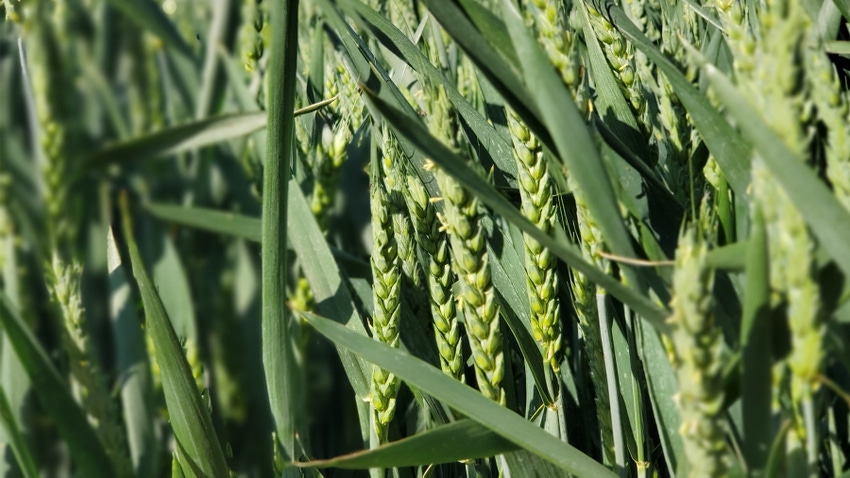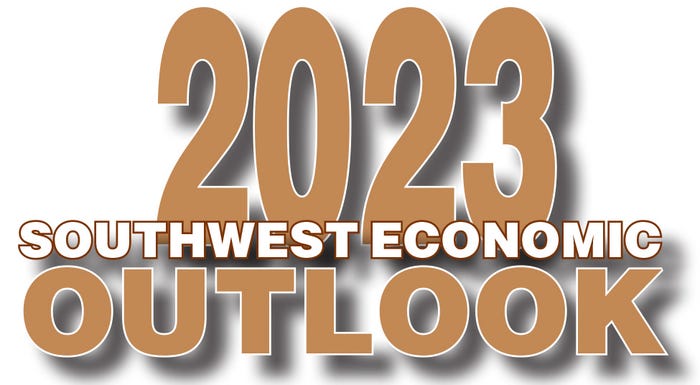
*This is the next article in our 2023 Southwest Economic Outlook series. Hear from Oklahoma State University and OSU Extension Service, and Texas A&M University and TAMU AgriLife Extension Service economists about the 2023 outlook.

“Assuming a partial return to ‘normality’ next year, we predict lower prices . . .” (FAPRI-MU Bulletin # 01-22). Let’s get real. Given the biggest variables, weather and the political situations around the world, there may be no such thing as “normality” in the wheat markets (Figure 1).
Since June 2007, the average daily price change for wheat has been 10 cents per day. The biggest daily increase was 96 cents. The largest daily decrease was 91 cents. Over the last 15 years, the Oklahoma and Texas Panhandle wheat price has averaged about $5.89. The highest price was $13.13, and the lowest price was $2.55.
Prices may be volatile, but prices still tend to follow patterns and cycles. Information on expected supply and demand still determines price. What makes tomorrow’s price different from today’s price is “new” supply and demand information.
The starting point for determining the impact of new information is the current supply and demand situation. Currently, world and U.S. wheat stocks are relatively tight, and there is above average uncertainty due to the Russian/Ukraine war and the weather situation around the world.
During the last five years, world wheat production has set a new record high every year. Increased production normally results in lower prices but not this time.
The USDA projects the 2022/23 marketing year average wheat price to be a record $9.20. The previous record price was $7.63 set in 2021/22.
The reason record prices were set in 2021/22 and again in 2022/23 is the increase in wheat use. World wheat use has set a record high every year for the past five years, and the increase in use was greater than the increase in production.
Higher use than production caused world wheat ending stocks to decline from 11 billion bushels to 9.8 billion bushels. The world wheat stocks-to-use ratio declined from 38.7% to 33.9%.
For the 2012/13 wheat marketing year, the U.S. wheat stocks-to-use ratio was 29.9% and the average price was $7.77. For 2022/23, the U.S. stocks-to-use ratio is projected to be 30.6%, and the average annual U.S. price is projected to be $9.20.
The reason the 2022/23 average annual U.S. wheat price is projected to be $1.43 higher than in 2012/13 is the Russian/Ukraine war. The war has the potential to remove about 2 billion bushels from the world’s export market. However, the odds are that most of the 2 billion bushels will stay in the market.
The USDA and FARPI-MU projected U.S. wheat prices through the 2026/27 wheat marketing year (Table 1). The current situation indicates that U.S. wheat prices will average about $9 during the 2022/23 marketing year.
The USDA projects wheat prices to average $8 in 2023/24, $7 in 2024/25, $6 in 2025/26 and then to level off at $5.70 in 2026/27.
FAPRI-MU projects wheat prices to average $7.11 in 2023/24, $6.44 in 2024/25, $6.02 in 2025/26 and then to level off at $5.84 in 2026/27. Both the USDA and FAPRI-MU predicted that wheat prices will level off in the $5.75 range.
What the last 15 years have shown is that the average wheat price may be in the $5.75 range, but the actual (normal) price may be several dollars higher or several dollars lower than the average.

About the Author(s)
You May Also Like






